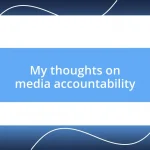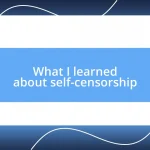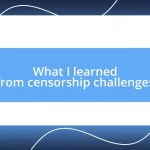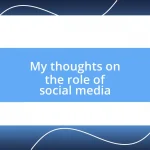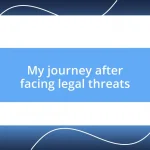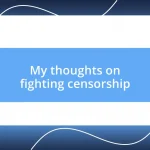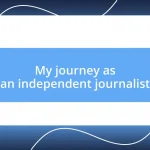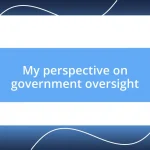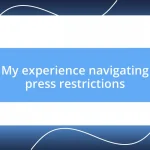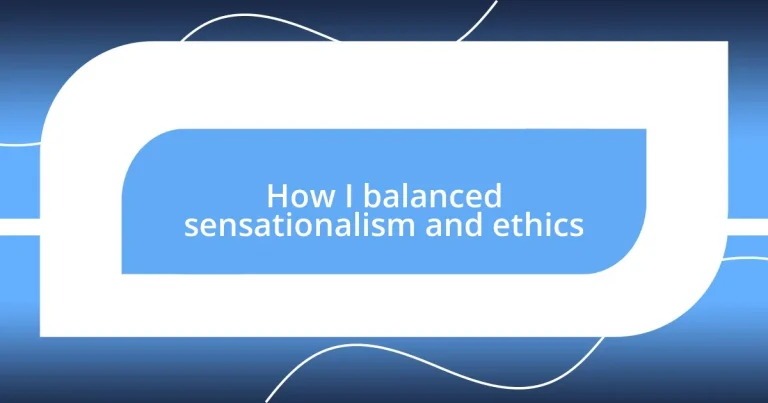Key takeaways:
- Sensationalism in media can erode trust and mislead audiences by prioritizing dramatic narratives over factual reporting.
- Core ethical journalism principles include truthfulness, independence, fairness, accountability, and transparency, which guide responsible storytelling.
- Successful ethical storytelling involves understanding audience needs, thorough research, and engaging with community feedback to foster trust.
- Empathy and continuous reflection on motivations are essential for maintaining integrity and connecting authentically with audience experiences.
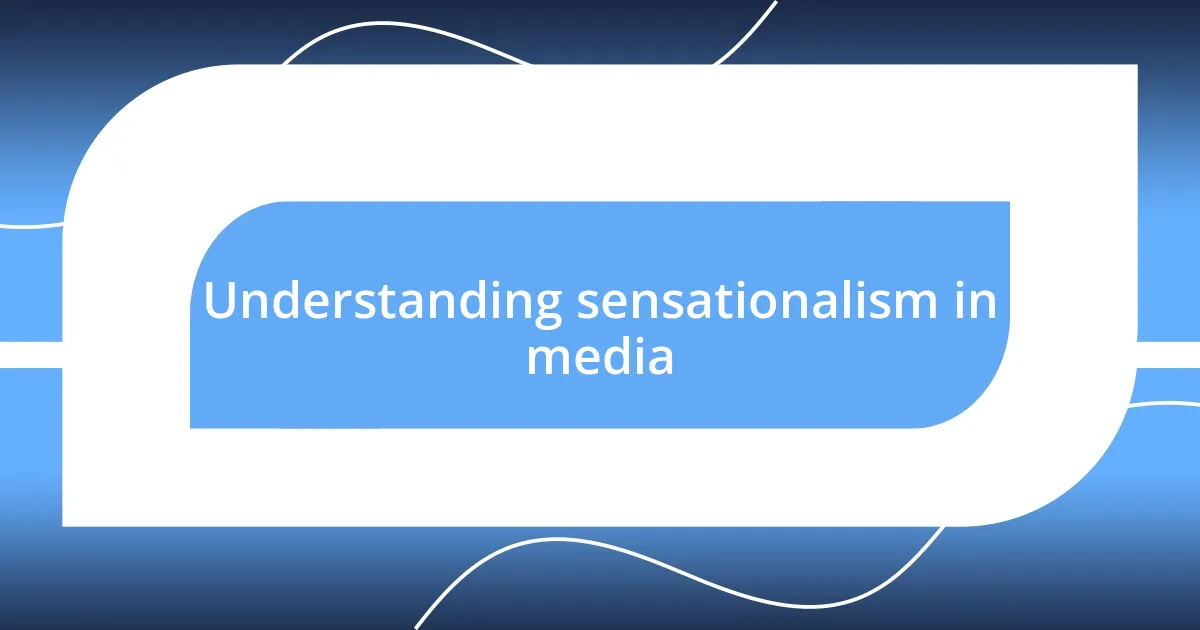
Understanding sensationalism in media
Sensationalism in media often blurs the line between attention-grabbing headlines and factual reporting. It’s the allure of drama that draws us in, but I’ve often wondered: at what cost? During my early career, I remember chasing a story that seemed too good to be true—you know, the kind that promises to reveal scandalous secrets. The excitement of potential exclusivity was intoxicating, yet I learned that prioritizing shock over substance can lead to diminished trust from an audience.
As I reflect on my experiences, I realize how sensationalism feeds on our emotions. It plays into our fears, hopes, and curiosities, creating an addictive cycle. I vividly recall a heart-wrenching story of a community affected by disaster, where the media twisted facts to sensationalize the tragedy. This not only misled viewers but also disrespected those suffering. It made me question whether I was contributing to a meaningful narrative or merely adding to the noise.
Moreover, sensationalism raises ethical dilemmas that every media professional must confront. How do we balance the desire to captivate an audience with the responsibility to report truthfully? I often contemplate this as I sift through stories, asking myself if I am creating value or just chasing clicks. By reflecting on these moments, I’ve learned that navigating sensationalism requires a thoughtful approach—one that prioritizes integrity without sacrificing engagement.
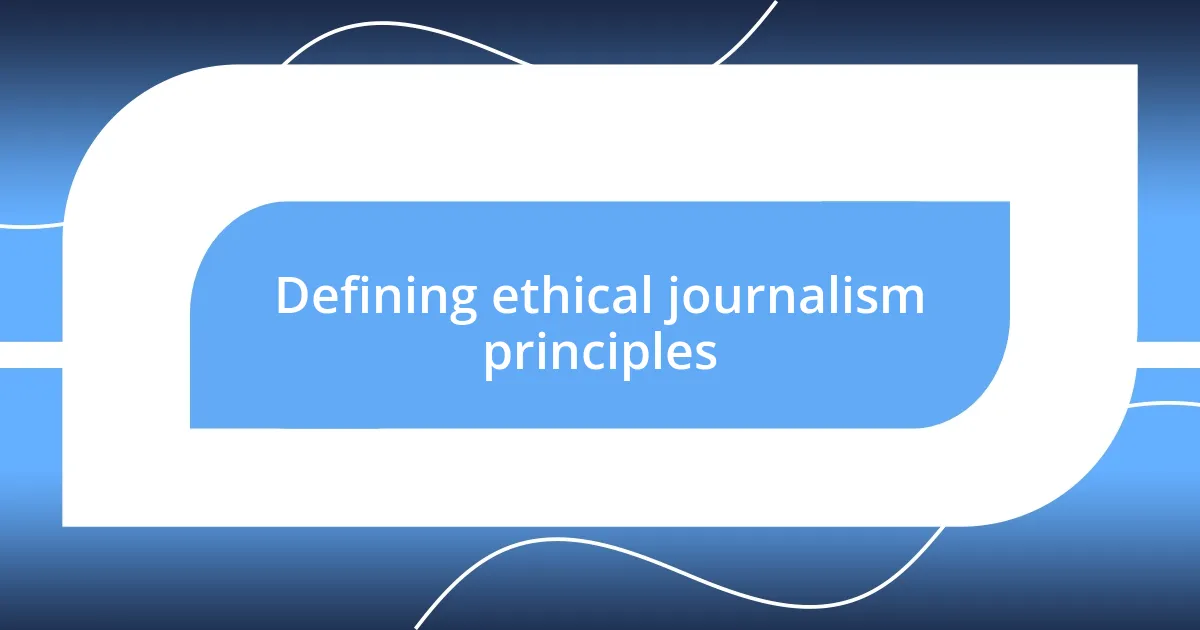
Defining ethical journalism principles
Ethical journalism principles are vital for maintaining credibility and trust within the media landscape. They serve as the foundation for responsible reporting, guiding journalists to uphold standards that respect both facts and their audience. I recall a time when I had the opportunity to interview a family affected by a controversial event. Instead of sensationalizing their pain for ratings, I chose to depict their story with compassion and accuracy, which ultimately deepened the connection with my audience.
Here are some core ethical journalism principles to keep in mind:
- Truthfulness: Always strive for accuracy in reporting, ensuring that the information presented is fact-checked and reliable.
- Independence: Journalists should remain free from outside influence, both financial and political, to maintain impartiality and objectivity.
- Fairness: It’s essential to present all sides of a story, giving a balanced view that respects diverse perspectives.
- Accountability: Journalists must take responsibility for their work, acknowledging mistakes and correcting them promptly.
- Transparency: Being open about sources and methods builds trust with the audience, making the reporting process clearer.
In a world where sensationalism often vies for attention, these principles act as a compass, steering journalists toward ethical decision-making. I frequently remind myself of the crucial role these guidelines play, especially when a story’s sensational aspects tempt me to overlook the bigger picture. Staying true to these ethical standards is what ultimately fosters a more informed and respectful society.
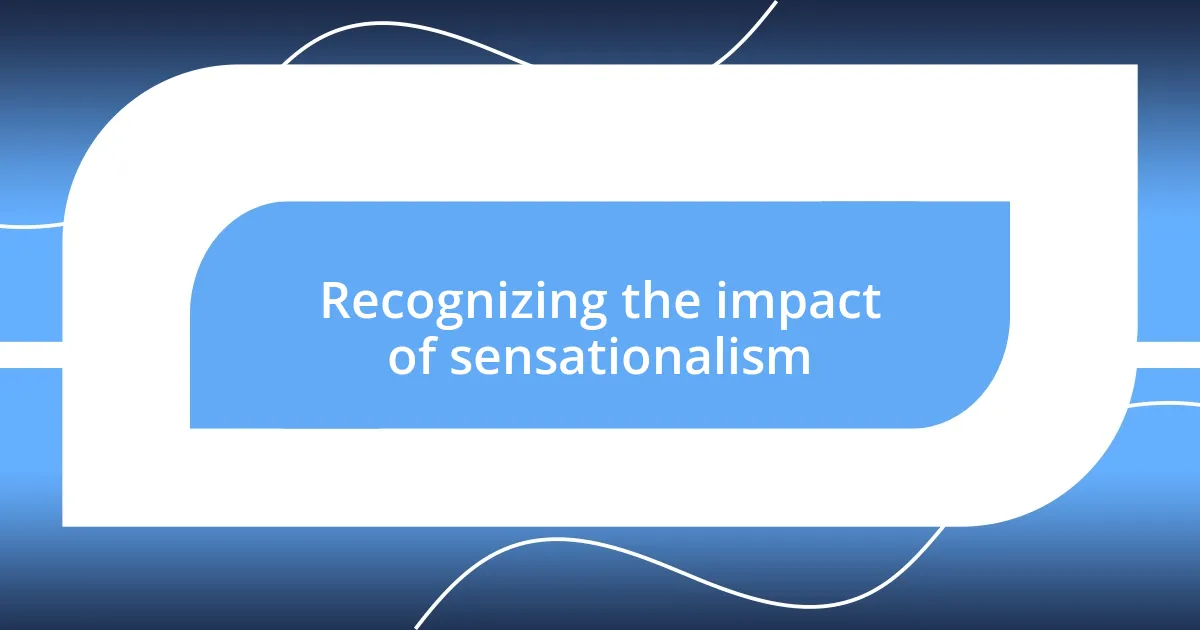
Recognizing the impact of sensationalism
Recognizing the impact of sensationalism is crucial as it affects how stories are perceived and consumed. I remember when a particular news outlet highlighted a minor local incident with an exaggerated headline that resulted in widespread panic. It struck me that while the intention might have been to draw in readers, the fallout was a community grappling with fear over a situation that was far less sinister than portrayed. This taught me that sensationalism not only distorts reality but can also create unnecessary chaos, pushing ethical boundaries.
The allure of sensationalism lies in its ability to leverage our emotions, which can lead to significant misunderstandings. I once wrote a piece that focused on human-interest elements in a more dramatic light instead of digging deeper into the factual context. I thought the emotional angle would resonate better. While it did capture attention, the feedback was sobering; readers expressed feeling misled. That experience underscored how sensational narratives can overshadow vital truths and, at worst, misinform the public.
The consequences of sensationalism extend into the realm of public perception and trust. After a bout of sensational reporting on a teenager’s misbehavior, faced with a backlash, I pondered a critical question: How do we repair the damage done to a community’s reputation? It became clear to me that the ripple effects of such journalism can last for years. Each sensational headline can shape narratives, and I strive to remind myself that my role is to provide clarity, not confusion.
| Impact | Example |
|---|---|
| Community Upheaval | Exaggerated headlines creating fear over minor incidents |
| Emotional Disconnection | Readers feeling misled by sensational stories lacking context |
| Long-term Trust Issues | Reputational damage stemming from sensational narratives |
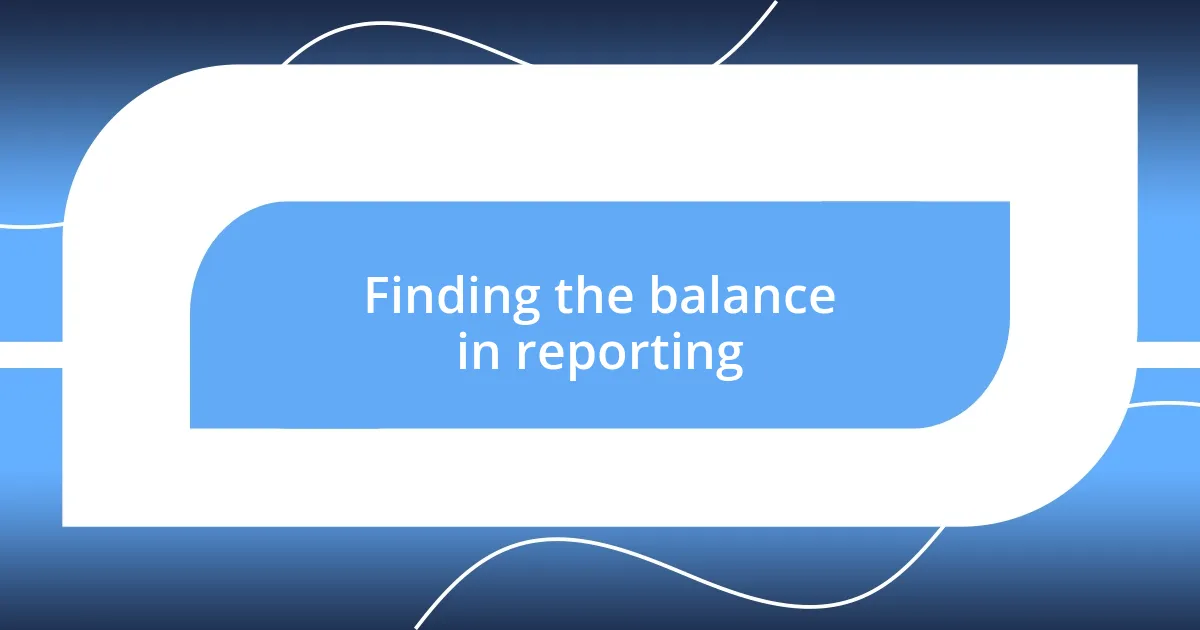
Finding the balance in reporting
Finding that sweet spot in reporting can be quite the challenge. I remember a story I worked on about a local environmental issue—initially, I was tempted to exaggerate the statistics to grab attention. However, I paused and asked myself, “Will this serve my audience or just my ego?” Ultimately, I chose to present the facts without sensationalism. This decision not only built trust but also sparked a more constructive conversation in the community about real solutions.
There’s a fine line where ethical journalism meets audience engagement, and I often find myself navigating it daily. For instance, during a coverage of a public figure’s scandal, I faced the dilemma of focusing on the scandal’s salacious details or highlighting the systemic issues at play. I opted for the latter. It was fulfilling to see how this approach led to a more informed dialogue, illuminating problems that went deeper than the surface spectacle. It reinforced my belief that as journalists, our mission should be to educate, not just entertain.
When I reflect on my reporting experiences, I realize that transparency plays a crucial role in balancing sensationalism and ethics. Recently, I covered a tragic accident that generated public outrage. Rather than dive into the sensational aspects, I made sure to explain my sources, the method of my inquiry, and the context of the events. This effort to openly share my process not only assuaged concerns about bias but also fostered a connection with my readers. I can’t stress enough how vital it is to remember that our audience deserves clarity over drama.
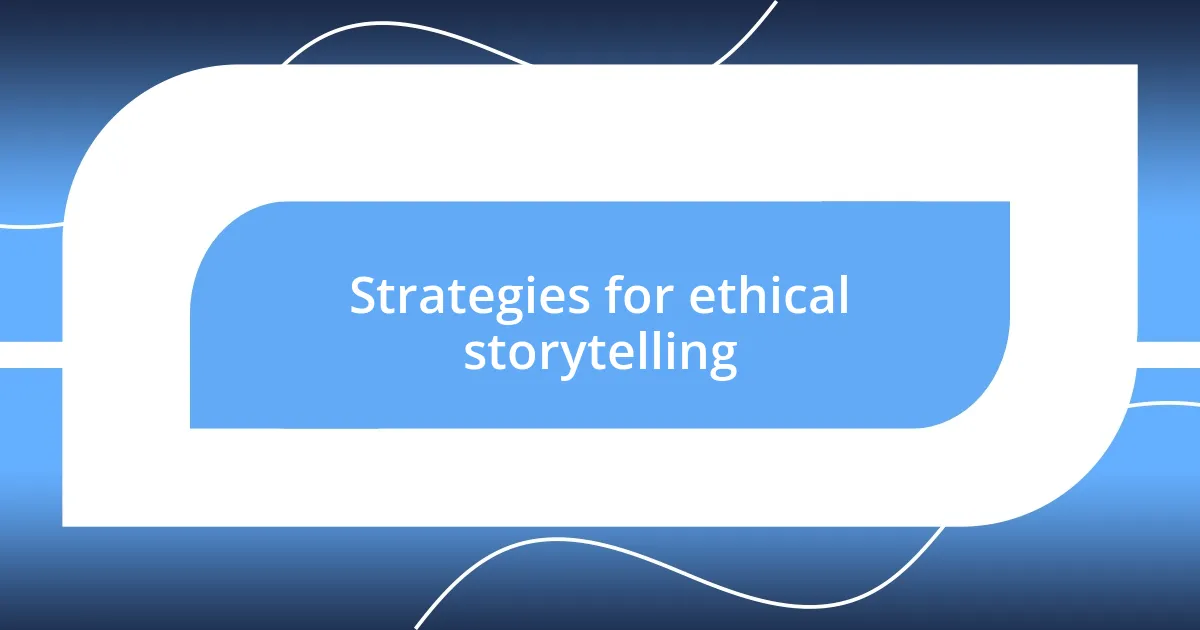
Strategies for ethical storytelling
Establishing ethical storytelling starts with understanding your audience’s needs and expectations. I’ve learned that listeners are not just passive consumers; they crave authenticity. For instance, I once crafted a narrative about a local hero. Instead of focusing solely on the heartwarming elements, I took time to delve into that person’s struggles. This layered approach not only enriched the story but also resonated deeply with readers, reminding me that the truth often lies in our shared vulnerabilities.
To maintain integrity, I emphasize the importance of thorough research. I vividly remember covering a sensitive topic where misinformation was rampant. Rather than hopping on the sensational bandwagon, I dedicated hours to verifying facts from multiple reputable sources. As I pieced together a clear and accurate account, it struck me how deeply this diligence could impact public understanding. Why risk spreading confusion when doing your homework can empower your audience with knowledge?
Lastly, embracing openness when sharing stories fosters trust. I once reported on a contentious issue within my community, and instead of shying away from the complexities, I openly invited feedback from my readers. Through social media polls and Q&A sessions, I engaged them in a dialogue, making it a two-way street. This approach not only demystified my process but also highlighted the importance of listening. After all, how can we tell their stories ethically if we don’t first understand their perspectives?
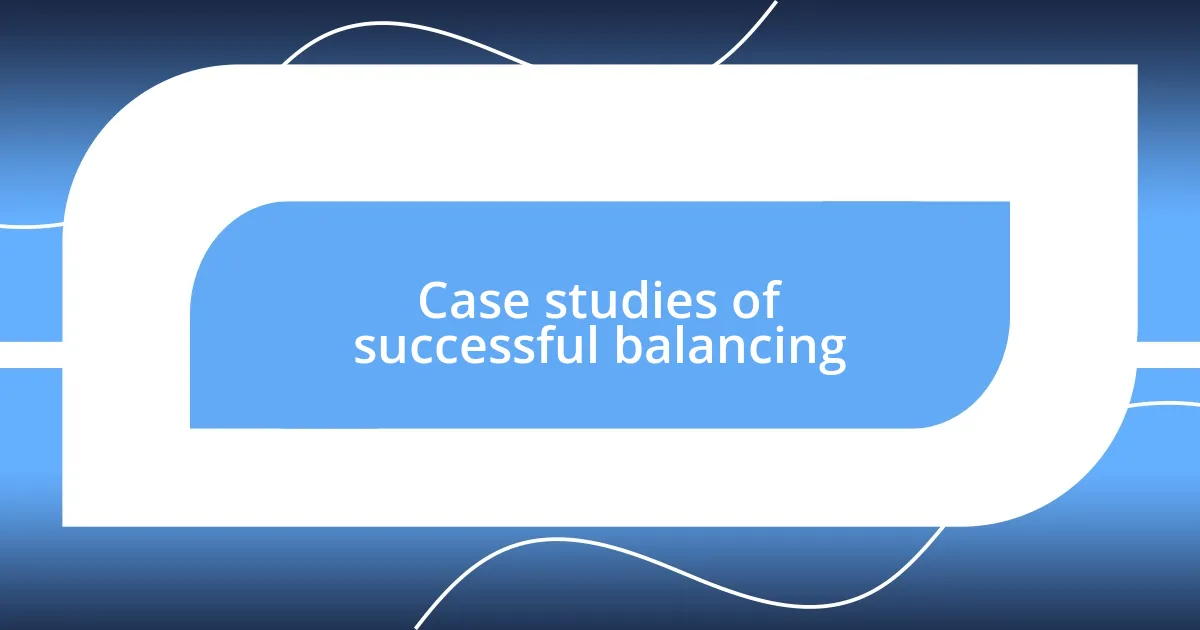
Case studies of successful balancing
When I think about successful balancing, one story comes to mind that truly exemplifies this. I once covered a devastating wildfire that affected my community. Instead of sensationalizing the destruction, I focused on the stories of resilience—like a family who lost everything but came together to support their neighbors. I remember feeling a wave of gratitude for their strength; it reminded me that, as journalists, our duty is often to highlight human spirit over tragedy.
In another instance, I was tasked with reporting on an election where disinformation was rampant. Faced with the choice of amplifying the chaos or grounding my piece in factual analysis, I chose clarity. I dug deeper into each candidate’s policies, crafting a narrative that prioritised substance over spectacle. It was fulfilling to receive feedback from voters who appreciated a clearer picture—how often do we overlook the power of informed decision-making in our rush for clicks?
Lastly, during a health crisis in our area, there was immense pressure to play into fear-based narratives. Rather than diving into alarming statistics, I interviewed healthcare professionals who offered honest insights into the situation. Sharing their relatable stories of hope and caution was more impactful than mere numbers. This taught me that by addressing fear with transparency, we could actually empower our audience. Isn’t it fascinating how our words can shape perceptions—and ultimately, actions?
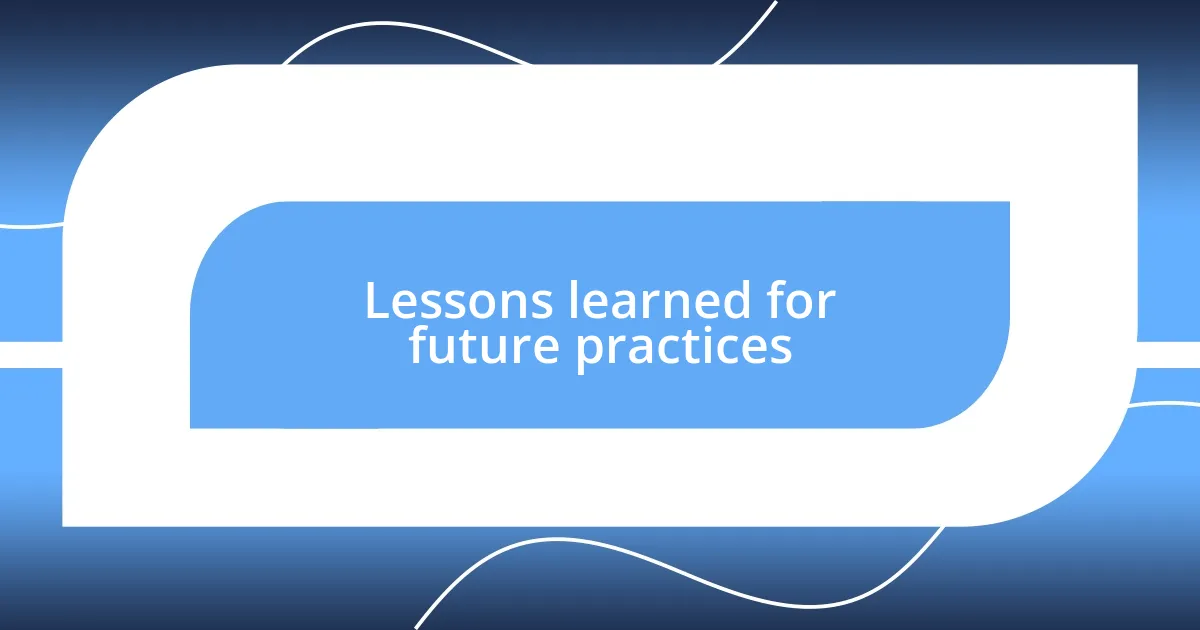
Lessons learned for future practices
I’ve discovered that the key to future practices lies in continuously evaluating our motivations. For instance, I remember a time when I was tempted to prioritize breaking news over accuracy. In that moment, I asked myself: Would my audience appreciate a rushed story, or do they value integrity more? This reflective practice transformed my approach, reminding me that each narrative should be a commitment to quality over quantity.
Another crucial lesson is the power of empathy in storytelling. Once, while reporting on a local tragedy, I found myself deeply moved by the affected families’ resilience. Rather than merely paying lip service to their struggles, I made it a point to connect with them emotionally and share their true feelings. Have you ever noticed how genuine connections can turn a simple story into a powerful message? This experience reinforced my belief that the emotional weight of a story can sometimes outweigh the sensational aspects.
Additionally, I’ve learned the importance of asking for help. During my career, I’ve often faced ethical dilemmas where guidance could have eased the pressure I felt. Whether reaching out to mentors or colleagues, I realized that collaboration enhances our ability to navigate complexities responsibly. Why tackle a daunting challenge alone when a supportive community is just a conversation away? This sense of camaraderie not only strengthens our resolve but also enriches the stories we choose to tell.



